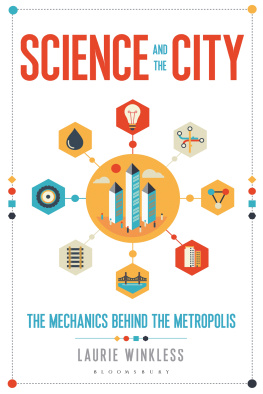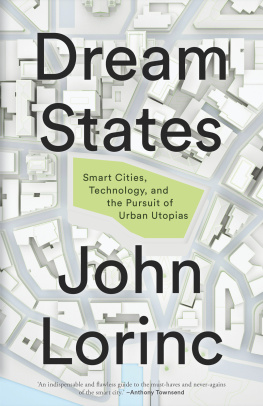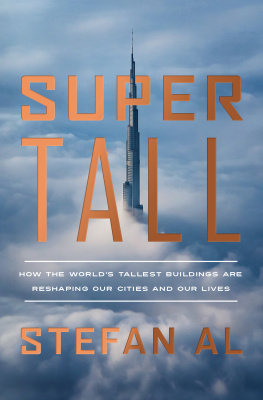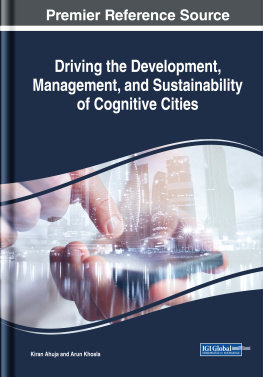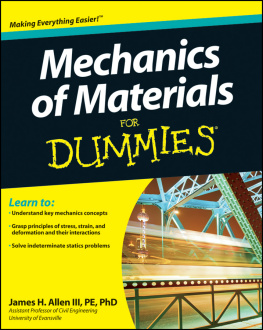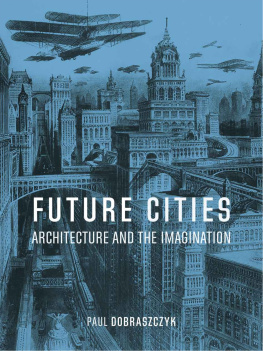SCIENCE AND THE CITY
Also available in the Bloomsbury Sigma series:
Sex on Earth by Jules Howard
p53: The Gene that Cracked the Cancer Code by Sue Armstrong
Atoms Under the Floorboards by Chris Woodford
Spirals in Time by Helen Scales
Chilled by Tom Jackson
A is for Arsenic by Kathryn Harkup
Breaking the Chains of Gravity by Amy Shira Teitel
Suspicious Minds by Rob Brotherton
Herding Hemingways Cats by Kat Arney
Electronic Dreams by Tom Lean
Sorting the Beef from the Bull by Richard Evershed and Nicola Temple
Death on Earth by Jules Howard
The Tyrannosaur Chronicles by David Hone
Soccermatics by David Sumpter
Big Data by Timandra Harkness
Goldilocks and the Water Bears by Louisa Preston
To my truest love, my family and my friends.
For always believing in me.
SCIENCE AND THE CITY
THE MECHANICS BEHIND THE METROPOLIS
Laurie Winkless

Contents
I am well aware of how annoying I am.
Ever since I learned how to talk, its been impossible to stop me from asking questions. Those kind, generous souls amongst you might say that Im just endearingly curious, and I thank you for that. But Im OK with admitting that I just get a kick out of finding answers. I think it was this that led me to study physics, and motivated me to go into research. In a weird way, its why Im now sitting here, writing this introduction. A while ago, I realised that there were countless interesting questions to be asked in the very place where I live; where many of us live.
Cities
In 2014, the UN announced that, for the first time in human history, more than half of the worlds population now live in urban areas. We are officially no longer farmers; we are urbanites. Cities have never been bigger, busier or more important. Luckily, for the past 11 years, Ive lived in what I think is the greatest city in the world: London (feel free to argue with me I promise you, my love is of an unshakeable kind). For the first little while, I was like a rabbit in headlights. But gradually, once the initial shock of the scale of the city wore off, I started to notice things, such as strange pipes hidden in the dark walls of tube tunnels. I found myself wondering how it all tied together, and what kind of engineering, technology and science lay behind it. In short, I wanted to figure out how cities work, and to help others to do the same.
As it turns out, all I needed to do was to spend too much time on Twitter, attract the attention of a publisher and then convince them to let me write for them Easy! Two years (and more high-vis than I ever could have imagined) later, here it is, Science and the City ( SATC ) my very first book. Its basically my scientific love-letter to the great cities of the world.
In SATC , I will take you on a big, sciencey exploration of your city. Through a series of jam-packed chapters, well peek behind doors and under the footpaths in cities across the globe, to discover the secrets therein. Well talk about everything from transport networks to the systems that get water and electricity to you (separately!). With me as your direct line to hundreds of experts, youll find answers to your questions about the urban jungle. Ill explain how the technology all around us works, and help you to build your own vision of the cities of tomorrow. Together, well trawl through the latest research papers to find the coolest technologies youve never heard of, which are set to change the way we build, travel and work in the future. Its going to be fun.
This is not a book written by a (lapsed) scientist solely for other scientists. This is for everyone who has ever wondered how traffic lights work, or why birds can perch safely on power cables. SATC is for those people who are curious about the world they live in.
Throughout this process, Ive met some remarkable scientists and engineers, people who have genuinely changed the way I see the world. But the real stars are the cities themselves so to them I say, thank you.
Close your eyes. Imagine that youre standing in one of the worlds financial hubs say London, Hong Kong or New York. Breathe in your surroundings and describe the scene. Perhaps youve found yourself next to one of the citys landmarks; maybe youre enjoying a coffee on a side street, or even battling your way through traffic in a cab. No matter where you are in the urban jungle, one things for sure: somewhere in your minds eye are numerous shiny, towering buildings of steel and glass skyscrapers . Few words better sum up a vision of a vibrant, growing, future-facing city, so theyre a perfect place to begin our exploration.
Skyscrapers arent a truly modern invention. High-rise buildings have been found in the heart of cities for 130 years, and the motivation behind constructing them is older still. In areas like Hong Kong Central or Lower Manhattan, theres a limited amount of land but plenty of people who want it, so the only way is up.
Today
How much stuff can we fit onto a piece of land? Well, in 2013, the average American home had a footprint of 232m2 (2,500sq ft), and that housed three people. In the heart of New Yorks financial district, its a little different. Each tower of the now-destroyed World Trade Center (WTC) had a footprint of just over 4,000m2 (43,000sq ft) or about the size of 17 average homes. But instead of housing 51 people, every day each of the WTC towers accommodated 25,000 of them! This isnt really a fair comparison, of course. Most office blocks dont attempt to offer living space; they only offer working space. Without the need to provide a bed for every worker, the area required to accommodate them shrinks dramatically. But the big picture remains because we can create tall buildings, a relatively small area of land can be comfortably used by thousands of people.
For me, the skylines that these buildings create represent some of our very best engineering. Skyscrapers must do a bit of everything: they support their own weight and that of the stuff they house, they resist wind (and, occasionally, earthquakes) and protect occupants from fires or floods. They must also be eye-catching, and provide a spacious, pleasant environment, with all floors easily accessible. Oh, and they have to be fully connected to the power grid, and offer a reliable water supply, waste removal infrastructure and communication systems. Doing all this while still realising the original vision of the architect is not easy; it requires a huge amount of engineering skill and considerable planning.
Be honest have you ever wondered how we can even build such huge towers? I guess the first question to ask is when does a tall building become a skyscraper ? The Council on Tall Buildings and Urban Habitat (CTBUH) keeper of the worlds skyscraper info does have some definitions in place. If a building is taller than 300m (around 1,000ft), it is called supertall ; if it reaches above 600m, it is called megatall . But we can broadly think of a skyscraper as being a building that is much taller than it is wide . In order to figure out how weve arrived at the modern vision of high-rise cities, Id like us to build a skyscraper from its raw ingredients. Well talk about the materials involved, as well as the equipment and building techniques that will ensure our skyscraper stays upright. There are plenty of challenges to overcome along the way. To get started, lets take a step back in time to the Industrial Revolution.

